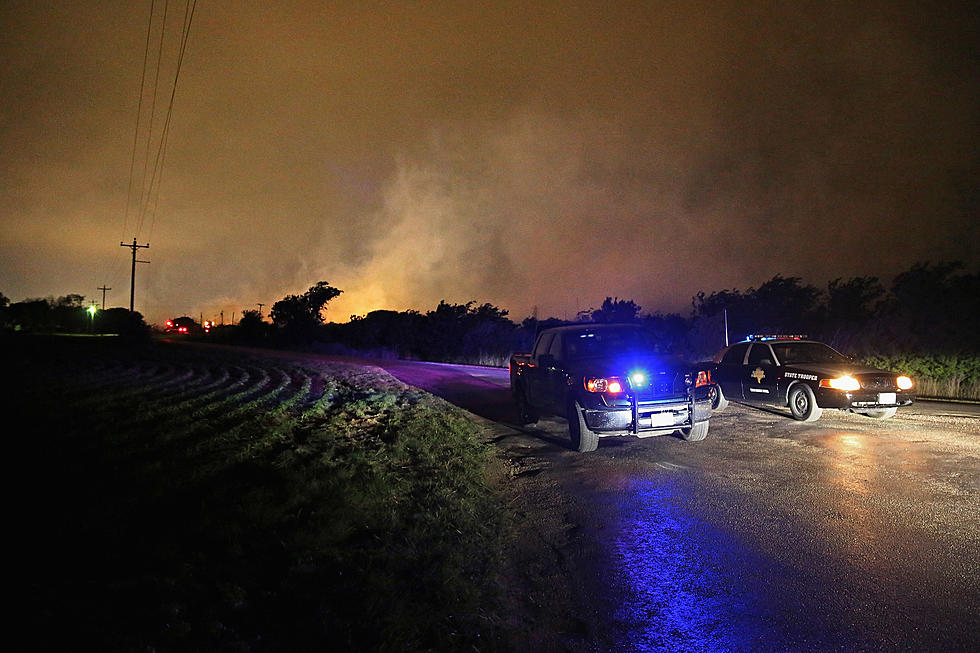
The 15 Catchiest Black Metal Songs
When you think of black metal, you probably think of at least a few central characteristics (such as high-pitched shrieking, tremolo guitar picking, haunting atmospheres, feisty tempos, lo-fi production, paganistic themes, corpse paint and maybe even Scandinavian church burnings).
What’s less commonly tied to the subgenre are sing-along melodies, tuneful instrumental passages and/or other overtly accessible attributes.
That’s not to say that it never happens, though.
READ MORE: Top 30 Black Metal Albums of All Time
Just listen to the 15 tracks on the list for proof, as each of them is an undeniable earworm for one reason or another. Whether they fit into traditional black metal or branch into other styles – symphonic, folk, etc. – they’re guaranteed to get stuck in your head.
"Fuel for Hatred" (Satyricon)
Taken from the Norwegian group’s fifth LP – 2002’s Volcano – “Fuel for Hatred” deservingly won the 2003 Alarm Award for Song of the Year.
It’s the band’s most attractive piece, not only because of its simple but gripping lead guitar riffs but also because of frontman Sigurd “Satyr” Wongraven’s immediate and punchy verses and lyrics. Of course, the chorus is downright anthemic, too, with the subsequent sludgy instrumental break (about halfway through) pulling you in via back-and-forth rhythmic hypnosis before resolving back into the frenetic core of the composition.
Honestly, it mirrors the structure of many mainstream pop and rock hits.
"Freezing Moon" (Mayhem)
Mayhem is arguably the most infamous part of the early Norwegian black metal scene, and although they’re largely known for their violent history, they’ve also produced some bona fide black metal bangers. Case in point: the immensely popular “Freezing Moon” from 1994’s seminal De Mysteriis Dom Sathanas.
Its visceral blend of doomy riffs and combative rhythms might as well be the compelling soundtrack to arriving at the gates of Hell, with its periodic fluctuations enhancing the allure.
Meanwhile, Attila “Void” Csihar’s sluggishly foreboding – and increasingly demonic – vocals are somewhat incongruous, so “Freezing Moon” is curiously soothing and sinister at once.
“Clouds Retiring” (Pure Wrath)
Truth be told, several compositions from Pure Wrath’s 2017 full-length debut – Ascetic Eventide – could’ve taken this spot since mastermind Januaryo Hardy filled it with numerous top-tier entries. “Clouds Retiring” gets the gold, though, because it’s just so damn beautiful.
Early on, the smoothly flowing staccato playing and melodic verses do enough to lure audiences in; yet, it’s the sudden dip into cleanly plucked guitar notes and orchestral timbres about midway through that wholly envelops us in gorgeous vehemence. Then, the original arrangement returns until the final minute, when it converts into an awe-inspiring collage of rainfall and introspective pianowork that – like all that preceded it – demands to be hummed repeatedly.
"Falling Snow" (Agalloch)
Despite not quite besting predecessor The Mantle as the quintessential wintertime folk/post-black metal record, Agalloch’s third full-length collection (Ashes Against the Grain) nevertheless housed plenty of icy splendor.
Look no further than the absolutely addictive guitar/drum synthesis that kicks off “Falling Snow.” Both components remain resourcefully captivating until the very end, too, highlighting the imaginative fluidity that’s always made the group’s chemistry so unique. Likewise, singer John Haughm provides some of Agalloch’s superlative hooks, urging listeners to emulate every one of his guttural observations and cleanly sung laments.
Even the discordant atmospheres and transitions that connect those passages are spellbinding.
“Blood on the Milky Way” (Sear Bliss)
Hailing from Hungary, Sear Bliss specialize in the atmospheric side of the style, and in addition to having an innately intriguing title, “Blood on the Milky Way” (from 2007’s The Arcade Odyssey) illustrates how eclectically enticing they can be.
The first few minutes are definitely engaging – if typical – but it’s the dichotomy of horns and supportive six-string riffs a quarter of the way through that surprises as much as it entrances. Similarly, the combination of acoustic arpeggios and ethereal tones shortly thereafter – and spread across the remainder of the song – are equally engrossing, and once the horns come back, “Blood on the Milky Way” becomes unavoidably hypnotic.
Of course, the bittersweet coda is mesmeric as well.
"Skald av Satans Sol" (Darkthrone)
There are many justifications for why Darkthrone’s fourth record – Transylvanian Hunger – earned a spot on our ranking of the 10 best metal albums of 1994. Third selection “Skald av Satans sol” (“Bard of Satan’s Sun”) is at the top of the list.
A prime example of the subgenre’s emphasis on anti-Christian motifs and explorations of nature – focusing on “gloomy forest[s],” “cold dark” and “cruel evil” – its sharp timbres, hyperactive pacing and dominant screeching are malevolently thrilling.
In particular, guitarist Fenriz’s dynamic chord progressions are thoroughly riveting, showcasing how well Darkthrone could carry on as duo following the departure of Zephyrous.
"Tyrants" (Immortal)
This epic cut from Immortal’s seventh LP, 2002’s Sons of Northern Darkness, continued the blackened thrash template of 2000’s Damned in Black and saw vocalist/guitarist Abbath providing bass on all but one piece (opener “One by One”).
For sure, “Tyrants” immediately has an engrossing, in-your-face ‘80s thrash attitude thanks to its unadulteratedly apocalyptic guitarwork, belligerent percussion and war-torn medieval narration. That said, the true pull comes from the midpoint segue into a brief respite of beautifully fatalistic six-string arpeggios (which then erupt into an onslaught of blast beats and downtrodden picking).
Such adventurous unpredictability can’t help but be mesmerizing.
“Myr” (Taake)
Another Norwegian powerhouse, Taake – now led by lone member Ørjan “Hoest” Stedjeberg – have been going strong for 30 years. However controversial the project may be, credit must be given to Hoest’s drive to explore wide-ranging instrumentation and rhythmic shifts, particularly on “Myr” (“Bog”) from 2011’s Noregs vaapen.
After initiating with your standard batch of rattled percussion and guitarwork, it glides into slower and more reflectively gripping new movements behind diabolical verses. It’s already an absorbing puzzle of panic, yet the contagiousness reaches its next level when Gjermund Fredheim’s unexpected banjo break turns “Myr” into a black metal hoedown.
We dare you not to dance to it!
"Disassembled" (Ihsahn)
This starting track of Ihsahn’s 2016 opus, Arktis., wastes no time sucking you in via invigoratingly magnificent and antagonistic guitar riffs and syncopation (which are eventually complemented by keys). That fusion alone is extremely catchy, especially in how it moves beside Ihsahn’s gruff verses.
Naturally, it’s all a precursor to his triumphantly melodic chorus (“Finger on the trigger / Back against the wall”).
Plus, the ensuing tribal chants and angelic bridge from Leprous’ Einar Solberg (“So, you thought you could escape without a fight / That we would lose the scent of your despair”) are the icings on the cake.
“Journey to the End” (Windir)
This melodic/folk black metal gem is nearly 10 minutes long, yet it uses every moment exceptionally well. It begins with steadfast drumming and irresistibly tragic electric guitarwork that’s soon punctuated by mournful acoustic mimicry, divine backing harmonies and vocalist Valfar’s distinguished shrieking commandments.
It’s already an enchanting combination, and it’s improved by multilayered clean singing (“I embraced my vision, as it was common for me”) and more intense harmonies.
Throw in the frisky synth-heavy electronic detour around the halfway point (that lasts until the end) and you have an enormously inventive and involving closer to Windir’s third LP, 2001’s 1184.
"The Mirrors of My Soul" (Naglfar)
“The Mirrors of My Soul” appeared on 2007’s Harvest, Naglfar’s first studio album following the comeback of Peter Morgan Lie (who previously played drums and then took over bass duties so that co-founder Kristoffer Olivius could concentrate solely on vocals).
As the track proves, his return to the legendary Swedish melodic black metal masters was very appreciated because he complements drummer Mattias Grahn’s tempo changes with engaging precision and flair. Beyond that, axemen Andreas Nilsson and Marcus Norman’s absorbing deviations punctuate the journey around Olivius’ scratchily delivered assertions.
Obviously, Olivius' invitingly conventional rhyming scheme makes it that much more infectious.
“Empire of Suffering” (Sargeist)
“Empire of Suffering” is the opener to 2010’s consistently fetching Let the Devil In, and it immediately demonstrates why the Finnish troupe have some of the tastiest guitar riffs in the game. Without a doubt, Ville “Shatraug” Pystynen’s menacing licks add compelling drama to ex-vocalist Hoath Torog’s bleak proclamations.
Their greatest moment arrives around two-and-a-half minutes in, when Torog’s inherently alluring growls – “Golden crosses turned to Hell / Horns against Heaven” – prompt Shatraug to launch into an even more intoxicating evolution.
Thankfully, he brings it back at the end of the track, leaving listeners humming it long after it’s over.
“Poisonous Flowers of Violence” (White Ward)
Composed with a markedly different lineup than 2017’s Futility Report, 2019’s Love Exchange Failure saw White Ward expanding upon their post-black metal/blackgaze magic. “Poisonous Flowers of Violence” is an enthralling reflection of that.
The somber introduction taps into the group’s penchant for affective dark jazz, and while Andrii Pechatkin’s traditional howls are sufficiently appealing, it’s the relentlessly tuneful instrumental shakeups that surround him that truly get your head bopping and your foot tapping.
Just about every forlorn guitar riff and rhythmic variation is fascinating, and the use of saxophone and piano near the end adds to the grippingly dissonant spectacle.
“Progenies of the Great Apocalypse” (Dimmu Borgir)
Dimmu Borgir are among Norway’s most beloved symphonic metal bands, with a commendable knack for harnessing mainstream approachability within their wicked orchestral foundations. “Progenies of the Great Apocalypse” – from 2003’s Death Cult Armageddon – perfectly exemplifies that trait.
Why?
Because of its relatively poppy verses and gloriously operatic choruses. (How do you not match Vortex’s enthusiasm as he sings, “Discover and conceive the secret wealth / And pass it unto your breed“?)
That’s not to say that the rest of the bombastically classical arrangement isn’t charming, but it’s the duality between Vortex and the venomous Shagrath that seals the hooky deal.
“Gin” (Cobalt)
A tribute to Ernest Hemingway and Hunter S. Thompson, 2009’s Gin was crafted entirely by vocalist Phil McSorley and multi-instrumentalist Erik Wunder, whose winning chemistry is on full display during the record’s poetically devastating opener: “Gin.”
As the sole player on it, Wunder deserves all the acclaim for the title track’s captivating chords and drumming. Be it his morose introductory guitar strums; his ability to transform that initial progression into a series of transfixingly aggressive and dynamic licks; or his capacity to steer the ship with adventurous and affective syncopation, it’s clear that he knows how to create sweet-sounding sinisterness.



